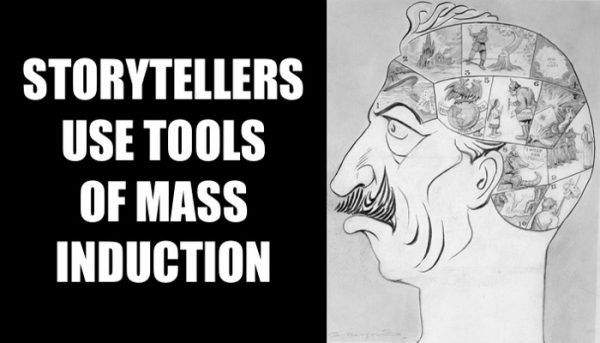
Before one tells a story, three things must happen. You must find someone willing to listen, they must have some interest in the subject, and they must have the time necessary to hear it. Then, it’s the storyteller’s job to hold their attention for the duration.
We’ve already discussed one attention-retaining technique: story statements–dual-purposed sentences that deliver factual information while simultaneously opening questions within a listener’s head. Story statements rely on the human brain’s propensity to question things. So, as long as your story continues answering those questions, you’ll continue to earn audience attention.
Today, we turn to another storytelling induction tool: the open-ended question. While story statements induce listener questions, open-ended questions induce listener ideas.
Storytellers are open-ended question masters because they focus on getting to the center of the story. They know that the best way to do so is to ask questions that can’t be answered with a simple yes or no. Why? Because open-ended questions draw deeper answers.
For example, let’s say that you’re trying to draw a success story out of a client. The following closed-ended questions won’t help much:
- Were you happy with the service? (Yes/No)
- Did you increase sales? (Yes/No)
While closed-ended questions will always evoke a response, the answers aren’t story worthy. However, if you tweak the questions just a little bit, you’ll get much deeper answers:
- What was your favorite part of the service?
- How has your sales responded since the service?
These questions demand more from respondents, forcing them to be more thoughtful with their answers.
And then there’s my ALL TIME FAVORITE open-ended question. “How so?”
“How so?” is the ultimate tool of mass induction. When used as a follow-up question to a previous answer, it forces the respondent to provide even more depth by adding nuances like context, prioritization, and comparisons.
Give tools of mass induction a shot. Try using story statements, open-ended questions, and your new secret weapon, “How so?” They just may help you find the center of your next story.
Photo Credit:
Herford, Oliver, Artist. Frenzylogical Chart. , 1917. Photograph. Retrieved from the Library of Congress, https://www.loc.gov/item/2010716595/.